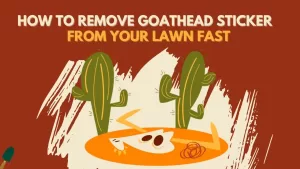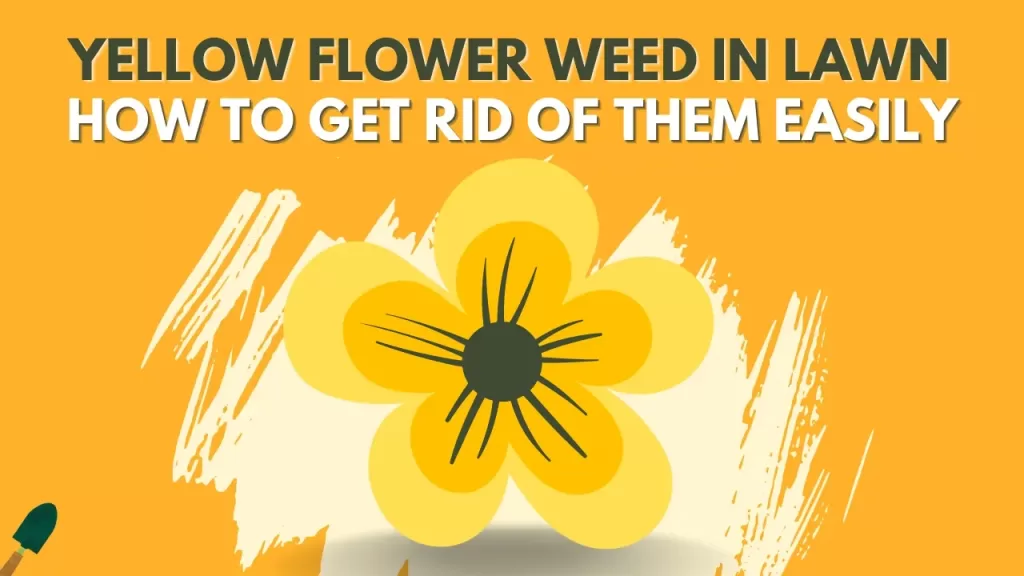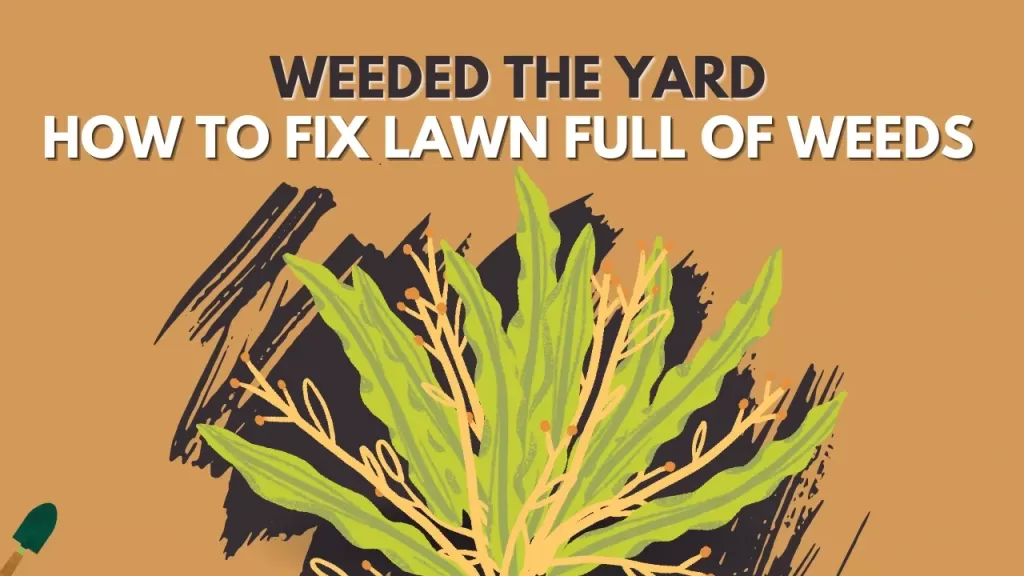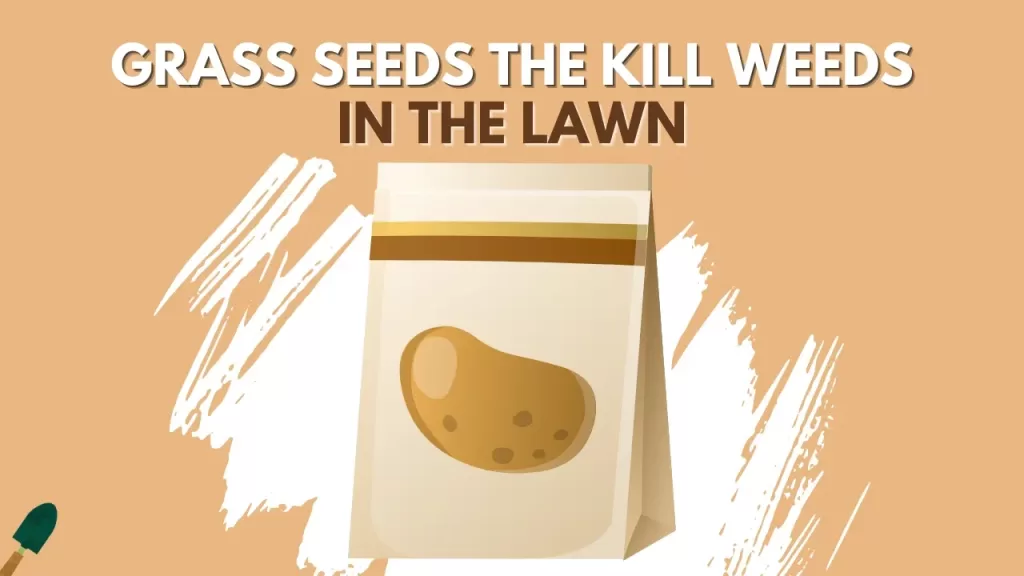Has anyone got pricked by that little Goathead sticker? Well, it happened to me and it was a royal pain, to be honest. So you must be wondering what goathead stickers are and how to prevent them. Do they harm your yard? Do they fall in the category of weeds? I will discuss all that below with the tips and tricks I have acquired over years. So first let’s define what Goathead actually is.
Goathead stickers are a small version of grass burs but can cause the same amount of problems in your yard and I have been there fighting with these weeds myself. They are difficult to eradicate from the yard but it is possible.
To kill the goathead sticker, take the help of the chemical herbicide Roundup and spray it on the plant, and put a cover if possible. This will choke the plant and then you can take it out and throw it into the bin. To prevent the goat head sticker in the yard, take the help of a pre-emergent herbicide like Surflan in the late winter to early spring which will stop the goat head seeds from germinating in the spring.
This is one chief way you can prevent the goat head stickers in your yard but there are other details you should know if you want to win this fight once and for all. So let’s talk about the goat’s head sticker weed in detail:
WHAT IS A GOAT’S HEAD STICKER?
Goat’s head weed also known as Puncturevine is a very hardy plant that comes from the Caltrop Family (Zygophyllaceae). The scientific name of goathead weed is Tribulus Terrestris. Goathead weed is a broadleaf plant that can grow really fast in the yard.
The goat head plant is native to Southern Europe and usually grows in dry and well-drained places like roadsides, pastures, fields, rail tracks, etc. The goathead weed thrives in hot conditions and can also grow in sandy places with less moisture where other plants can’t grow, which makes it a hardy weed.
The goat head weed grows from the seed and can establish itself very quickly. The goat head seeds start to germinate in early spring and the plants can start flowering within 3 weeks and produce more seeds for next year and continue to flower all summer. One plant can typically produce 200 to 1500 seeds in one growing season.
HOW TO IDENTIFY A GOATHEAD WEED?
The goat head plant is a broadleaf plant, with mat-forming stems and leaves. The leaves are small and hairy and are divided into 4 to 8 pairs of smaller leaflets, opposite each other on the stem. The stems of goathead weed start from the central point of the taproot and grow very deep into the ground. The plant has a very deep roots system that can branch out all around.
The plant has bright yellow flowers growing which blooms in the summer season. The flower has five petals and it only opens in the morning. One flower produces a cluster of 5 seeds that look like a goat head, from which it has got its name. The seeds also have pointy burrs which can cause pain when they stick to the skin of humans or pets.
Description:
- Broadleaf plant with hairy stems and leaves
- Bright yellow color flower with five petals
- A cluster of 5 seed pods growing from the flower
- The seeds have pointy stickers
- The seeds look like the goat’s head
- The leaves are divided into pairs of 4 to 8 leaflets
IS GOAT HEAD STICKER A WEED?
Yes, the Goat Head sticker plant is considered a weed as it is a non-native plant that comes from Southern Europe and can grow in dry and sandy conditions. The goat head plant is also included in the Arizona Noxious weed List as a Class C noxious weed, which means it is a widespread plant.
The plant is also considered a weed as it is very difficult to control or prevent once it establishes itself in the area. The seeds can live in the soil for up to 5 years before germinating and bringing the plant back to the yard.
How do I get rid of goathead stickers in my yard?
Goathead weed is a very hardy plant that can multiply quickly and can fight with other plants in the area. The other problem of goathead weed is the seeds of the plant which have sharp stickers on them. These stickers can stick to your feet or to the skin and can be very painful to remove. That’s why no one wants a goathead planted on their lawn.
So how can you remove goat head plants from your lawn easily? There are several ways and it depends on how much effort and time you can give and also what are your preferences. If you don’t want to use chemicals then it’s better to remove the weed manually or use heat as a weapon, but the easiest way would be to kill all the weed with chemical herbicide.
- Pulling it manually – If you want to go organic and can give time and effort and also the infestation is small in your yard then you can pull out all the Goathead plants by hand. To pull out this plant you need to take precautions as they may have the seeds attached which have a sharp sticker that can stick to your skin and cause pain and bleeding.
Wear gloves and boots before pulling out the goathead plant and try to remove it wholly with the roots if the root is still alive in the soil, it can shoot out new plants and your effort will go in vain. Also try to keep all the seeds attached to the plant or collect all the fallen seeds and throw them away with the plant because if they remain in the soil, they will germinate next season ruining all your efforts.
- Using propane torch – If you have a large infestation of goathead weed on your lawn and you don’t have the time and also are not willing to put effort then the best organic way to kill the infestation is to burn the plants. You can take the help of the Propane torch to burn the infestation. I use the Red Dragon VT 2-23 C Propane Vapor Torch in my yard to kill.
There are some pros as well as some cons to using a propane torch on your lawn. The good thing about using a propane torch is that it will not use any chemicals and will kill the plant as well as the seed instantly. But the cons is that there is no surety about if it will burn the whole root of the goathead plant. So if you are using a propane torch then you need to make sure that you burn the whole plant with the roots.
But before using a propane torch you need to see if using a propane torch in your area is allowed or not and also all the safety guidelines of your area as it can be dangerous to use a propane torch and can harm you as well as others if not used properly.
- Using chemical herbicide – The best and easiest way to remove goathead weed from your lawn is with the help of a chemical herbicide. Using a glyphosate-based herbicide like roundup can easily kill the whole infestation from the yard very easily within a week.
What I do when I use chemical herbicide to kill Goathead plant is that after applying the herbicide, I cover up the area blocking the sunlight for a week and then peek under the cover to see if the plants have turned yellow or brown, remove the trap and rake the area cleaning it up and throwing the dead plants in the bin.
Keep in mind that glyphosate-based herbicides are non-selective chemicals, which means they will kill any plant that will come in their contact. So spray the chemical carefully and read the label before for proper instructions as these chemicals are harmful and can cause problems.
How to kill goat weed naturally in my yard?
Yes, you can kill the goathead weed naturally with the help of vinegar and Epsom salt. Mix ½ cup of vinegar and ½ cup of Epsom in one gallon of water and make a solution. You can also add 1 tsp of dish soap so that the solution sticks to the weed and burn the plant effectively.
Spray the solution only to the goathead weed directly 2 to 3 times to make sure the plant is 100% dead. Keep the solution away from wanted plants as it can burn any plant which comes in its contact.
WHICH IS THE BEST GOATHEAD WEED KILLER?
The best Goathead weed killer is Roundup Herbicide which is a Glyphosate-based fertilizer. The roundup fertilizer is really effective on goathead weed as it is a broad-spectrum herbicide that will kill almost every plant which will come in its contact. Apply the herbicide 2 to 3 times during the growing season to make sure all of the goathead plants are killed and no new plants are growing.
If you are looking to prevent the goathead weed in your yard for next year, then the Surflan herbicide is the best goat head preventer which will kill all the seeds in the soil and stop the germination in the spring. Apply Surflan in late winter and early spring, when the seeds of the goat head plant start to germinate.
HOW TO PREVENT GOAT’S HEAD IN MY YARD?
The goathead weed plant is an annual plant that starts to germinate in the early spring, it then grows all the summer producing flowers and seeds, and then dies in the late fall to early winter. So if you have goat head weed in your backyard, there is a good chance that it will come back next year as the seeds produced this year will be in the soil ready to germinate in the early spring. The seeds of the goat head weed can live in the soil for 4 to 5 years making it really difficult to stop them from coming back every year.
As we know its lifecycle and when the seeds start to germinate. The best way to prevent the goat head in your lawn or backyard is by stopping the seeds from germinating in the soil. If the seeds won’t germinate it will stop the whole cycle of growing and producing new seeds and then coming back next year again.
The best way to stop the seeds from germinating in the soil is by applying pre-emergent herbicide, which will kill all the seeds in the soil and prevent the weed from coming back into your lawn. The best pre-emergent to stop goat head seeds from germinating is Surflan, which is an Oryzalin and Trifluralin-based herbicide.
Apply the pre-emergent 2 to 3 times from late winter to early spring to make sure all the seeds in the soil are dead and won’t germinate. Read the label on the container to apply the herbicide properly and then water the area so that the herbicide is absorbed properly by the soil and reaches all the goat head seeds.
HOW DID GOAT’S HEAD PLANT SPREAD SO QUICKLY?
The goat head is a very fast-growing plant as it has a very deep root system that can spread in the yard very fast. These roots can help new goathead plants to grow from it reproducing at an alarming rate. After 3 to 4 weeks of germination of the plants, it starts to produce bright yellow flowers which then produce lots of seeds.
These seeds fall to the ground and then germinate really quickly growing new Goathead plants in the yard, and the cycle continues. These seeds can remain alive in the soil for years to come and germinate next spring, growing a lot of goathead plants at once in the yard.
OTHER NAMES FOR GOAT’S HEAD WEED
The Goathead weed is recognized by many names but the most common of them are Puncturevine and Tribulus Terrestris.
Other names of goathead weed:
- Caltrop or small caltrops
- Bullhead
- Cat’s-head
- Devil’s eyelashes
- Devil’s-thorn
- Devil’s-weed
Are goat head stickers poisonous?
Yes, Goathead stickers can be poisonous, as the leaves and stems contain toxic chemicals which can cause illness and other problems. The burr of the plant can also cause issues to livestock or pet by sticking in their throat or other body parts causing wounds and pain.
Where are goat head stickers found?
The goathead sticker plant is native to Southern Europe and thrives in hot and dry conditions, which makes it an invasive species which can easily outcompete any other plants. The goathead plant can be found in driveways, edges of roadways, pathways, and construction sites which are not suitable for other plants but the goathead sticker plant can easily grow there.
Conclusion
Goathead weed is an invasive plant that can grow and cover up your lawn very easily. But removing it from the yard is not impossible. The goat head weed can be killed using Roundup or other Glyphosate-based herbicide or burned using a propane torch. If you want to go organic then you can take the help of vinegar and Epsom salt and spray the solution directly on the plant. To prevent the plant from coming back Into your yard, spray the Surflan pre-emergent herbicide in the late winter to early spring to kill all the goathead seeds before they start to germinate.
Hope you find all the answers and can now fight with the goathead weed in your yard. Get Set Gardening!





